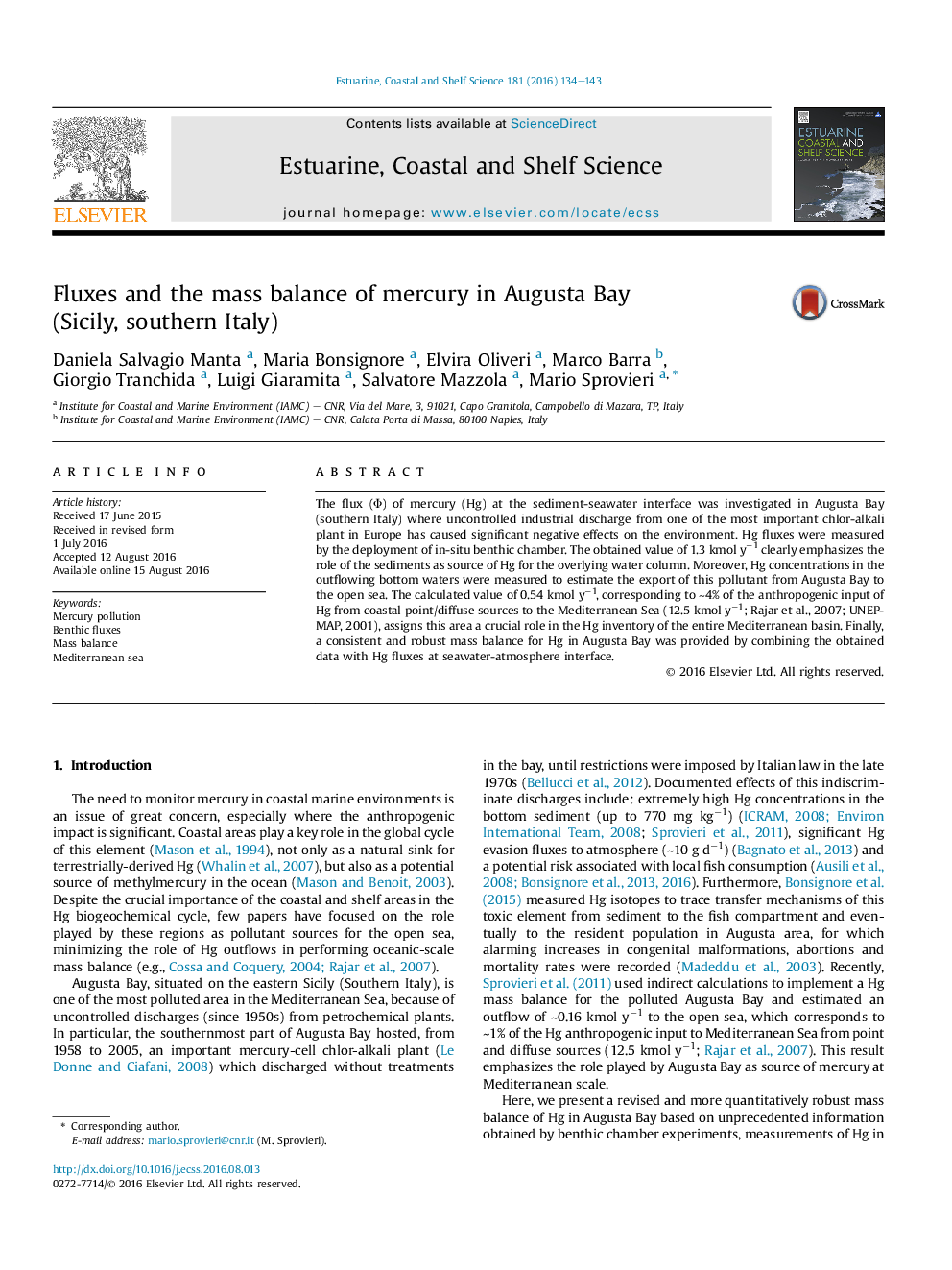| Article ID | Journal | Published Year | Pages | File Type |
|---|---|---|---|---|
| 4539133 | Estuarine, Coastal and Shelf Science | 2016 | 10 Pages |
The flux (Φ) of mercury (Hg) at the sediment-seawater interface was investigated in Augusta Bay (southern Italy) where uncontrolled industrial discharge from one of the most important chlor-alkali plant in Europe has caused significant negative effects on the environment. Hg fluxes were measured by the deployment of in-situ benthic chamber. The obtained value of 1.3 kmol y−1 clearly emphasizes the role of the sediments as source of Hg for the overlying water column. Moreover, Hg concentrations in the outflowing bottom waters were measured to estimate the export of this pollutant from Augusta Bay to the open sea. The calculated value of 0.54 kmol y−1, corresponding to ∼4% of the anthropogenic input of Hg from coastal point/diffuse sources to the Mediterranean Sea (12.5 kmol y−1; Rajar et al., 2007; UNEP-MAP, 2001), assigns this area a crucial role in the Hg inventory of the entire Mediterranean basin. Finally, a consistent and robust mass balance for Hg in Augusta Bay was provided by combining the obtained data with Hg fluxes at seawater-atmosphere interface.
